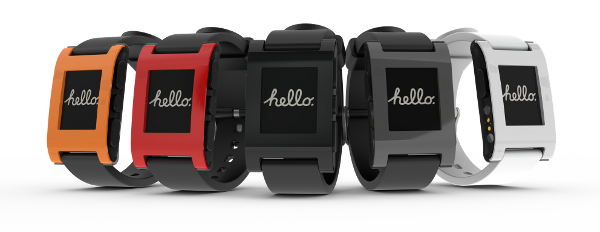Almost exactly a year ago I wrote about my first impressions of Pebble and concluded that “I have to wonder if smart-watches even need a display“. As a smart-watch, I found Pebble most useful for remotely controlling my phone (through its physical buttons) and for promoting awareness of notifications on my phone (through its vibration alerts); its “clunky and awkward user interface” was even detrimental to its other, more important, function as an ordinary watch.
With that in mind, I was excited by Yahoo! Labs recent paper at Tangible, Embedded, and Embodied Interaction (or TEI): Shimmering Smartwatches. In it, they present two prototype smart-watches which don’t have a screen, instead using less sophisticated (but just as expressive and informative) LEDs.
One of their prototypes, Circle, used a circular arrangement of twelve LEDs, each in place of an hour mark on the watch-face. By changing the brightness and hue of the LEDs, the watch was able to communicate information from smart-watch applications, like activity trackers and countdown timers. Their other prototype used four LEDs placed behind icons on the watch-face. Again, brightness and hue could be modulated to allow greater information to be communicated about each of the icons.
I really like the ideas in this paper and its prototypes. High resolution displays are more expensive than simple LED layouts, require more power and are not necessarily more expressive. Hopefully someone builds on the new design space presented by Shimmering Smartwatches, which can certainly be expressive but also lower cost. Also, everything is better with coloured LEDs.

